






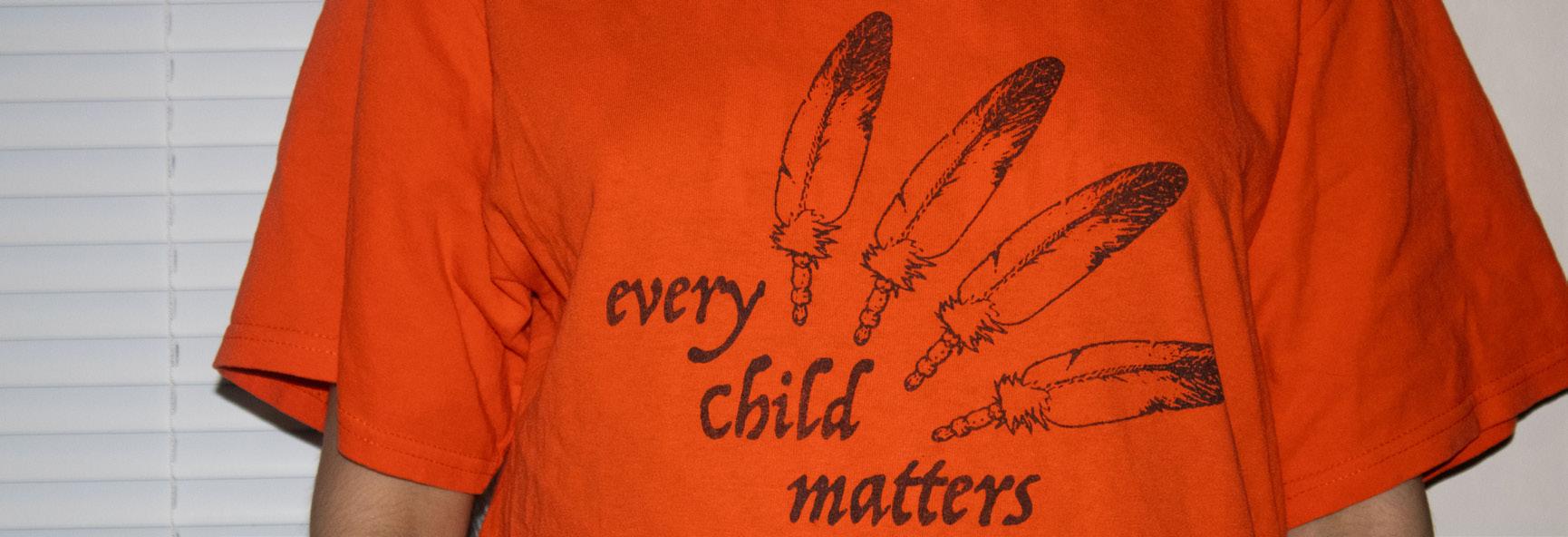
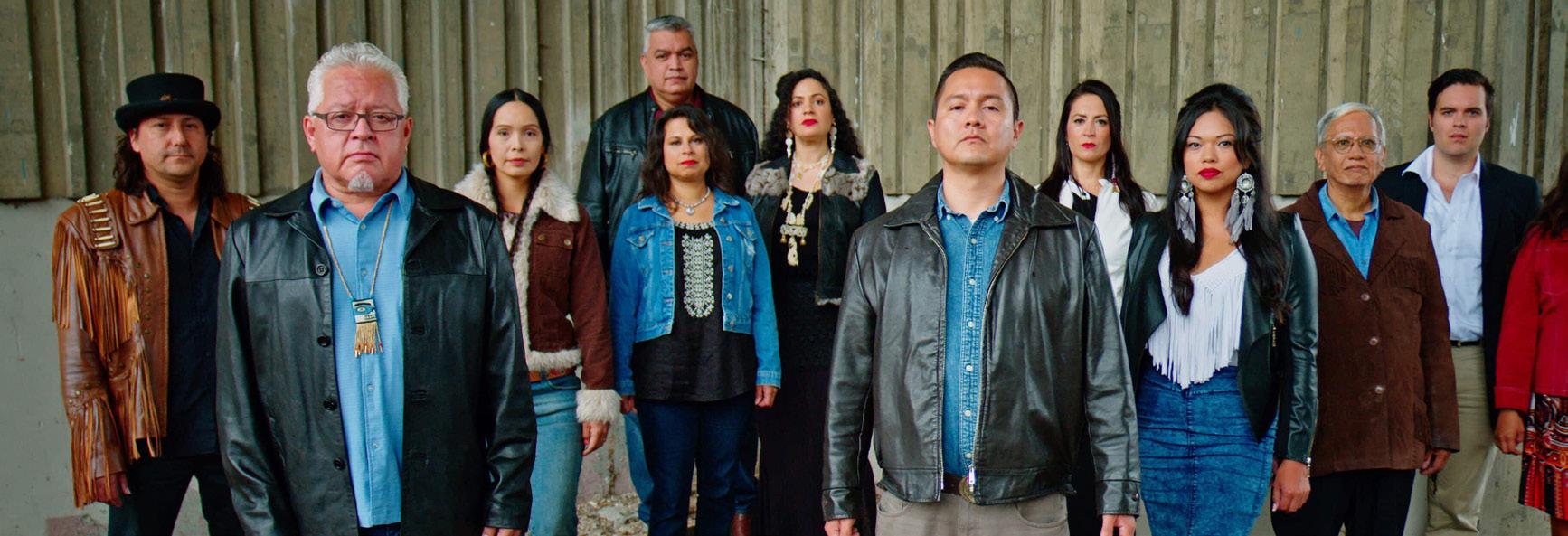


EDITOR-IN-CHIEF Petra Chase eic@the-peak.ca
COPY EDITOR Michelle Young copy@the-peak.ca
FACT CHECKER
Karly Burns factchecker@the-peak.ca
NEWS EDITOR Olivia Sherman news@the-peak.ca
NEWS WRITER
Hannah Fraser
OPINIONS EDITOR
Olivia Visser opinions@the-peak.ca
FEATURES EDITOR
Daniel Salcedo Rubio features@the-peak.ca
ARTS & CULTURE EDITOR
Izzy Cheung arts@the-peak.ca
HUMOUR EDITOR C Icart humour@the-peak.ca
STAFF WRITERS
Kaja Antic, Hailey Miller, and Yasmin Hassan
BUSINESS MANAGER
Yuri Zhou business@the-peak.ca (778) 782-3598
PROMOTIONS MANAGER
Juliana Manalo promotions@the-peak.ca
PRODUCTION & DESIGN EDITOR
Abbey Perley production@the-peak.ca
ASSISTANT PRODUCTION EDITORS
Minh Duc Ngo and Josh Ralla
PHOTO EDITOR
Gudrun Wai-Gunnarsson photos@the-peak.ca
WEB MANAGER
Subaig Bindra web@the-peak.ca
MULTIMEDIA EDITOR
Emma Ciprian
ASSISTANT MULTIMEDIA EDITOR
Quinn Masselink
DISTRIBUTION COORDINATORS
Anastasia Shatska and Michelle Leung
BOARD OF DIRECTORS
Emma Jean, Payal Raj, Olivia Visser, and Yuri Zhou
CONTRIBUTORS
Sofia Chassomeris and Elyana Moradi
PEAK ASSOCIATES
Amirul Anirban, Cam Darting, Prerita Garg, and Den Kinanti
COVER ARTWORK
Angelina Tran
STAY CONNECTED
The Peak MBC2900 8888 university Dr. Burnaby, BC V5A 1S6 (778) 782-5110


Follow us on Instagram, at @thepeakatsfu and check out our YouTube channel, The Peak (SFU).
READ THE PEAK
Find extended and cited articles at the-peak.ca Download digital issues at issuu.com/peaksfu
The Peak is the official weekly student newspaper of SFU and is published every Monday. We’re funded by a student levy and governed by a Board of Directors. Any SFU student can apply to become a writer or editor.
We reserve the right to edit submissions for length, as well as style, grammar, and legality. We also reserve the right to reprint submissions at any time, both in print and on web. We will not publish content that is sexist, racist, or otherwise prejudiced.
We acknowledge that The Peak’s office is located and our paper is produced, distributed, and read on the Unceded Coast Salish Territories of the xwməθkwəy̓əm (Musqueam), səlilwətaɬ (TsleilWaututh), Kwikwitlem (Coquitlam), Kwantlen, Katzie, Semiahmoo, and Skwxwú7mesh (Squamish) Peoples. Unceded means that this land was never surrendered, relinquished, or handed over in any way. We recognize that the unceded land that we occupy includes not only the SFU Burnaby campus, but extends to the land occupied by the Vancouver and Surrey campuses as well.

Content warning: mentions of genocide.
On May 30, SFU president Joy Johnson and the Board of Governors agreed to discuss divestment from arms companies that profit from the genocide in occupied Palestine. This announcement comes after months of community pressure and over 1,000 students, faculty, and alumni signing the divestment petition of SFU Faculty for Palestine, who are “a network of faculty who support the cause of Palestinian liberation.” Other actions included the Belzberg Library protest at SFU Harbour Centre while the Board of Governors’ meeting was being held.
According to Faculty for Palestine, before SFU’s announcement, a faculty-wide vote was held for the divestment. Due to allegations of hacking, the vote was found unreliable and a re-vote was scheduled three weeks later.
The petition demands divestment from BAE Systems, Booz Allen Hamilton, and CAE Inc, all companies that have “collectively facilitated the killing, maiming, or displacement of millions.”
In a message to the community about “responsible investments at SFU,” Johnson and Angie Lamarsh, Board Chair, write that “SFU needs to make investment decisions that are aligned with the academic mission, the University Act, and our values. To do this, the existing Responsible Investment Policy must be reviewed and strengthened.”
The Responsible Investment Policy “sets out SFU’s approach to incorporating environmental, social, and corporate governance considerations into its investment decisions.”
SFU stated this review process will “contain a plan for community consultation” and will “allow for a consultative and transparent process.”
The Peak corresponded with Faculty for Palestine for more information on SFU’s decision to discuss divestment. Members chose to remain anonymous.
Faculty for Palestine stated SFU’s framing of the genocide as the “Israel-Hamas conflict” was concerning. “It has been clear for months that the central dynamic since October 7, to say nothing of decades of occupation, has been one of genocide and ethnic cleansing,” Faculty for Palestine said. They cited “institutional neutrality,” which suggests that institutions should be neutral on political issues, showing SFU is an “accomplice in whitewashing an unfolding genocide that was acknowledged months ago by the International Court of Justice.”
The more they dig in their heels, the more we will push.
Israeli attacks genocide against Palestinians since October 7 has led to the deaths of at least 37,232 people and wounded 78,000 at time of writing. Israeli attacks did not begin in October 2023, but have a long history dating back to the creation of Israel in 1948, when Palestinians were violently expelled from their homeland. This is also known as The Nakba, and was recently recognized by the UN, who condemned “Israel’s ongoing actions” between 1948–2024, “including occupation and dispossession of Palestinian property” and “brutal and disproportionate use of force.”
Currently, the distribution of food in Rafah has been suspended and medical supplies are limited since Israel took over “the Palestinian side of the Rafah land” in early May.
On May 17, faculty casted an online vote on Boycott, Divestment, Sanction (BDS) motions a “Motion on Israel/ Palestine” and a “Motion to Divest from Corporations Engaged in Military Arms Production.” If both are passed, SFU would formally commit to boycotting, divesting from, and sanctioning these companies. The morning of the vote, the BDS vote was allegedly hacked from 7:30–8:00 a.m., in which “305 identical votes were cast from a single IP address,” making the vote “unreliable,” according to Faculty for Palestine. They also reported on their Instagram that the Faculty Association of Simon Fraser University claims this is being investigated by University IT and Security, however The Peak could not independently verify this.
Faculty for Palestine later stated, “It is unacceptable that there has been no acknowledgement from the SFU administration” regarding the hack, as it “constitutes serious interference in university affairs and faculty governance.” They demand “transparency and accountability” in the form of a formal investigation into the matter.
A re-vote was held on June 7, in which the two BDS motions were passed. Faculty for Palestine states that “divestment efforts have a cumulative effect, and the university has a moral obligation to abstain from investing in and profiting from military arms production.” On May 20, Ontario Tech University became the first university in Canada to divest from companies supplying military arms to Israel.
“We are not just hopeful, we are determined to make this happen,” said the Faculty for Palestine. “The more they dig in their heels, the more we will push.”
The Faculty for Palestine asked SFU, “Do our investments in the military arms industry align with our values as a university?”
This is a developing story that The Peak will continue to cover in future issues.
The eviction notices have been rescinded, but may return following city approval
 HANNAH FRASER · NEWS WRITER
HANNAH FRASER · NEWS WRITER
On May 27, a rally was held outside Elizabeth Manor, Surrey, demanding the city stop the property’s planned demoviction, in which over 50 families would be evicted. Demoviction, as in demolition-eviction, is “when a landlord evicts tenants from a building so that it can be demolished and redeveloped into new apartments or condos.” Tenants of Elizabeth Manor who were part of the rally also marched to Surrey City Hall in protest of the loss of affordable housing in the Lower Mainland.
The rally was led by ACORN (Association of Community Organizations for Reform Now), a “community union of low and moderate-income people” fighting for “social and economic justice.” In a press release, ACORN Tenant Leader
Arun Mulalka said, “If I got evicted my rent would almost triple, who can afford that with expenses skyrocketing right now? I have a five-year-old daughter who is starting school in September, my whole life is here in this neighbourhood.”
For the past five years, Mulalka has lived with his family at Elizabeth Manor, paying $935 for a two-bedroom apartment.
In 2024, Surrey has an average of $2,422 rent for a twobedroom apartment. Low rental vacancy causes “thousands of tenants” to be “displaced by demovictions” and compete for housing — driving the prices up, according to CBC Demovictions of affordable housing are happening across BC, without a promise of affordable rentals elsewhere for tenants.
In light of the protests, the landlord of Elizabeth Manor has taken back eviction notices given to residents.
The Nation’s agreement with BC government aims to limit detrimental oil and gas activities
YASMIN HASSAN & PETRA CHASE · STAFF WRITEROn May 30, the BC government and Blueberry River First Nations announced a three-year pilot plan to support Indigenous land restoration and protect Treaty rights. The Gundy High Value 1 Plan will reinforce Indigenous peoples’ involvement in decision-making regarding industrial development on and surrounding the land.
Blueberry River is a self-governing First Nations community made up of “Beaver and Cree cultural groups,” located in Northeastern BC, where “each culture contributes to creating one strong, proud, and determined First Nation.” They are signatories of Treaty 8, which is a historic agreement between settlers and Indigenous peoples across BC, Alberta, and Saskatchewan, and “the Southwest portion of the Northwest territories.” Since it was signed in 1899, it legally requires all activity on these lands to respect “Indigenous way of life,” which includes a “healthy environment upon which [Indigenous] rights depend.”
The new plan comes after BC breached Treaty rights in 2021. The BC Supreme Court sided with Blueberry River First Nations, who brought the legal challenge to court. The provinical government was found to have permitted industrial over-development such as logging and oil and gas activities, which hindered activities like hunting and fishing. In January 2023, BC and Blueberry River First Nations signed the Blueberry River Implementation Agreement that set up a partnership for taking care of “water, land, and resource stewardship.” The agreement ensures that Blueberry River First Nations members can meaningfully exercise their Treaty 8 rights, while those who rely on resource industry jobs in the region can also have a sense of reliability.
& EDITOR-IN-CHIEF
The Gundy plan is one in a series that sets new rules for developers that stress the involvement and protection of Treaty 8 Nations. Specifically, it focuses on “two watershed management basins, Cameron River and Blueberry River” in Fort St. John. It also includes a “robust framework for carrying out new oil and gas development.” The plan will involve regular reviews during its implementation.
Finding balance to sustain the future lives of our members, Elders, and youth for generations to come is an important factor in reconciliation.
JUDY DESJARLAIS
CHIEF OF BLUEBERRY RIVER FIRST NATIONS
Judy Desjarlais, Chief of Blueberry River First Nations stated in the joint announcement, “Finding balance to sustain the future lives of our members, Elders, and youth for generations to come is an important factor in reconciliation.”
The economic and environmental reconciliation representatives for Blueberry River Resources, an independent operation that seeks to “offload a majority of
According to Surrey Now-Leader, the city claimed it was “premature to have issued eviction notices to remaining tenants” considering the project hasn’t been “presented to Council and the applicant is still going through the permitting process.” ACORN reported that as “the developer is still planning on going to City Hall to get approval to redevelop Elizabeth Manor,” they are “calling on the the City of Surrey and Mayor Brenda Locke to urgently meet with tenants to discuss [their] concerns and ACORN’s proposed solutions to the demoviction crisis.”
ACORN leaders met again on June 10 at Surrey City Hall to request a meeting with Mayor Brenda Locke and the city councillors. They expect their perspective to be considered before Locke and the councillors consider the demoviction application.
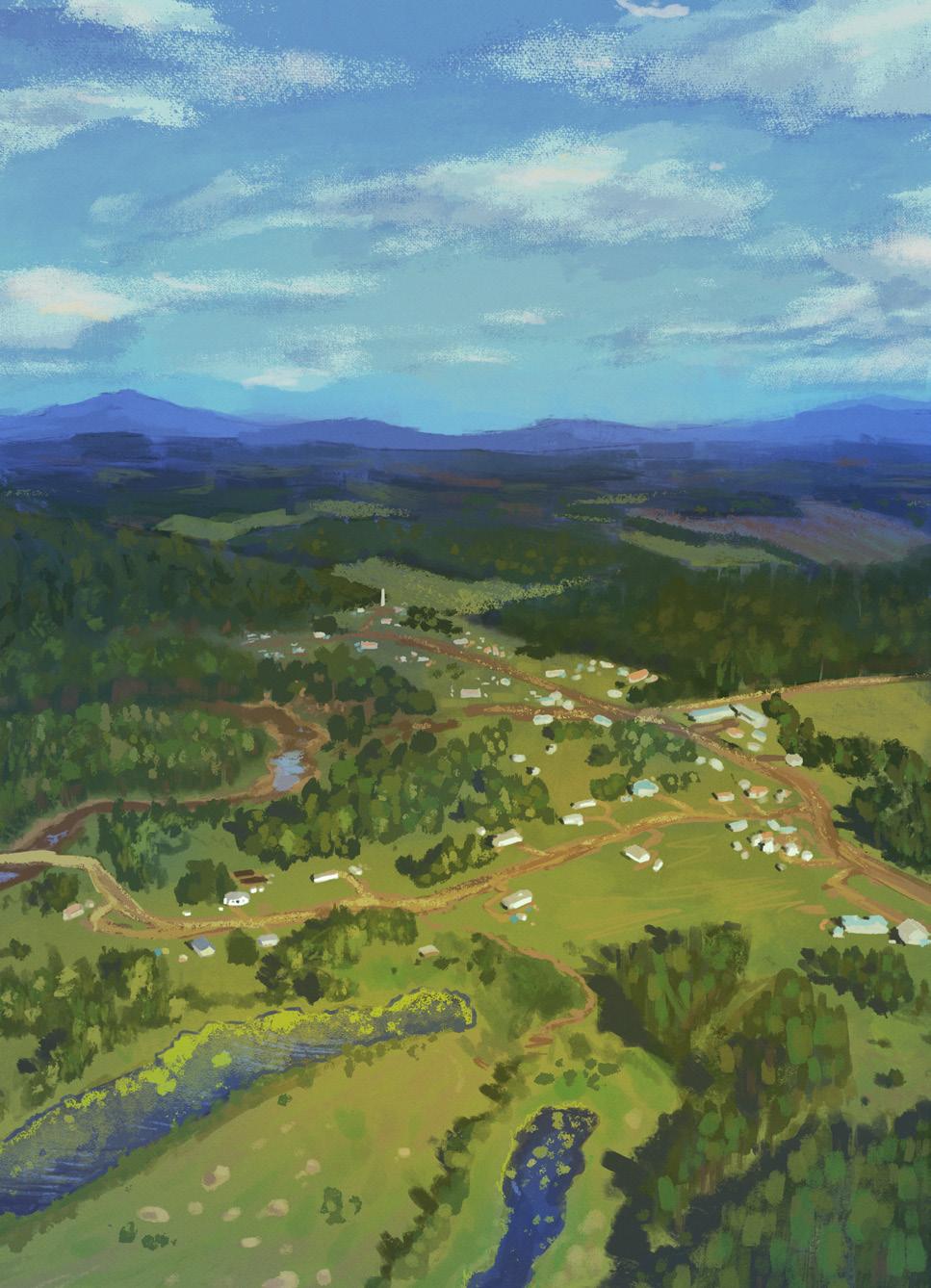
economic and restoration duties from the Blueberry River First Nations administration,” stated, “Through strong industry partnerships, our combined efforts sustain traditional practices, such as hunting, fishing, trapping, guiding, horsemanship, praying, and gathering medicines.”
In a statement to The Peak, the Ministry of Energy, Mines and Low Carbon Innovation said BC is “committed to working with Blueberry River First Nations toward effective and efficient ways to balance the interests of Nations, the province and petroleum and natural gas tenure holders.”
They go on to say that ensuring this plan goes through well is essential for a “sustainable environment, robust cultural values, as well as a vibrant local economy,” which helps not only the individual, but the community as a whole.
The Peak reached out to Blueberry River First Nations for an interview, but they were not available for comment by the publication deadline.
We must shut down residential school denialism in all its forms
 EDITOR
EDITOR
Content warning: mentions of unmarked graves, genocide, death, and abuse.
When more than 200 unmarked graves were discovered at Kamloops Residential School in 2021, a movement to uncover the extent of residential school graves gained traction. As evidence pointed to the existence of thousands of unmarked graves, a disturbing number of residential school deniers came out of the woodwork and into the public eye — so much so that if you search “residential school graves” on Google, you’ll be met with misinformation on the first page.
Popular conservative news outlets like National Post have published multiple articles hinging on denialism, including one titled “Canada slowly acknowledging there never was a ‘mass grave.’” Other fringe publications have claimed there’s “no evidence” supporting unmarked graves, and have even called them a “social panic.” Kimberley Murray, a member of Kanehsatà:ke First Nation and Independent Special Interlocutor, commented last year that the rise in residential school denialism coincides with increased reconciliation efforts. Her office’s interim report from last year mentions that “many international experts point out that denialism is the last step in genocide.” The fact that a significant portion of the population disagrees on the nature of residential schools is evidence of colonialism’s lasting legacy.
For the past decade and a half, Canada’s running narrative has been that residential schools were a “dark side” of the country’s history. But these institutions weren’t just a side of Canada’s colonial legacy — they were foundational to it. Residential schools were part of a large-scale forced enfranchisement operation, meaning attendees lost their Indian status and any protections from the Indian Act. The forced assimilation into so-called Canadian culture estranged people from their cultures and families, causing severe intergenerational trauma. Viewing residential schools as a singular historical event is harmful. It minimizes individual experiences, overlooks continuous systemic injustices, and opens up opportunities for denial.
Residential school denialism isn’t just the idea that residential schools didn’t exist, but rather encompasses talking points that are considered socially acceptable enough for even major newspapers to publish. Frequent attempts to downplay the extent and role of residential schools undermine the collective trauma experienced by over 150,000 children. Arguments that “only” 32% of “school-age status Indian children” attended these institutions diminish how large a number that really is. Similarly, the claim that these mass graves were not “deliberately concealed” or “the result of homicide” overlooks the fact that many Indigenous children still went to these schools to die — be it from neglect, illness, or abuse. When semantics take priority over the voices of survivors, something is deeply wrong.
There’s no shortage of evidence for how genocidal residential schools were, yet conversations about their legacy were less prominent in popular media before 2021. The surge in discussions about these institutions outside an academic setting is a good thing. However, it’s still not enough to merely recognize that residential schools existed. History is not a fixed point on a graph — the impacts from events continue on. Studies have found that many residential school survivors and their descendants experience poor physical and mental health to this day. Residential schools were often falsely advertised as positive schooling opportunities for Indigenous people, yet many survivors were never taught to read or write, which set them up for difficulty in the workforce. Comments that downplay the government and Catholic church’s responsibility in these schools are steeped in cruelty and misinformation.
When we see denialism in our news feeds, we should use it as an opportunity to uphold truth — reconciliation is meaningless without it.
For a government that supposedly cares enough about Canadian news content to blacklist it from social media platforms, it’s telling that they’re also willing to fund publications that set reconciliation efforts back decades. Canada’s Department of Justice recently began talks of “legal mechanisms” to tackle residential school denialism, which could potentially include persecution. The European Union has similarly outlawed Holocaust denial, and Canada followed suit in 2022. Criminalizing residential school denialism could be a step in the right direction, especially if it prioritizes news outlets. At the same time, Canadians also have an individual responsibility to address the harms of the system they live under. Michael Eshkawkogan, an Anishnaabe man from Wikwemikong, said, “There is room for conversation with people who downplay or misunderstand what Indigenous people experienced in residential schools.”
When we see denialism in our news feeds, we should use it as an opportunity to uphold truth — reconciliation is meaningless without it. If someone you know makes a claim that minimizes residential schools, call them out. If a credible publication you read downplays any aspect of residential schools, email the editor-in-chief and consider not supporting them. Continual self-education is also important — don’t expect Indigenous people to do that labour for you. Recognizing and dispelling misinformation and denialism means we must all know what truth is.
Why is the job market so terrible right now? From no jobs being available to them having too many requirements, it seems like this weird epidemic has no end.
Most of us at SFU are just broke students in need of money. Most of us can’t work more than part-time, and many turn to jobs like serving. But the qualifications needed to become a server? Ridiculous. Why do I need 2–3 years minimum of serving experience to become a server? That’s one year away from a 4-year degree! I’m sorry but it makes no sense. How am I supposed to get experience when experience is a requirement!?
Speaking of chances, the chances of getting a job after graduation seem to be at an all time low right now. What are we supposed to use our degrees for now? At this point, the issue is beyond qualifications and more so about the scarcity of jobs. So many graduates are fighting for the same position, it’s like a depressingly realistic Hunger Games

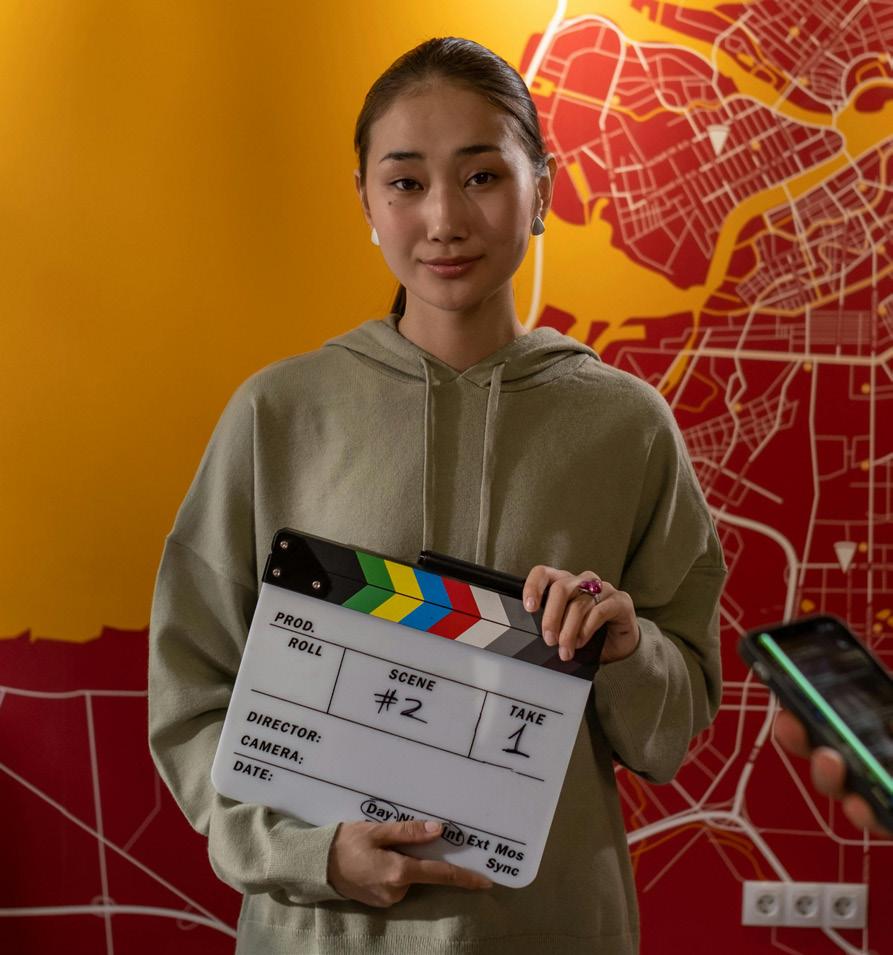
I often ask myself if artificial intelligence (AI) can predict the future, and tell us whether or not it will leave humans jobless. I don’t want to ask an AI software this, because I don’t want to give it any ideas. This area of the unknown seems to be a rising issue in many fields today, with it now being very prominent in the advertising field.
From commercials to graphics, AI is increasingly being used to generate advertisements. One example is the hotel booking app Trivago, and its ad that replaced 20 actors with one actor speaking different languages. Instead of hiring different actors for different languages, the company is now using AI to translate their ad campaigns. At first glance, AI may seem like a way for companies to be efficient. However, it poses a threat to those employed in advertising and translation fields. With AI being able to generate content at a quicker pace, workers like voice actors and actors are left in an unstable position.
To compare how AI impacts livelihoods, let’s look at a different period where new technology was introduced across industries. During the industrialization period, it was thought that new inventions would cause unemployment, but this proved to be the opposite. Industrialization led to more job opportunities by providing workers more skills to learn. Some people argue a similar situation could be on the horizon, with AI opening up space for more employment opportunities. However, AI and machines are two very different things. AI can expand without human labour and undergo constant improvement, whereas machines are generally created for a limited use. AI threatens the very jobs it creates.
Because of AI’s flexibility, it can threaten creatives by pulling from datasets that include their work, replicating comparable skills to humans. While AI can’t replace human talent, it can be alluring for repetitive tasks that require speed and efficiency. Quality aside, it can allow corporations to produce more content at a speed that outpaces human labour. AI can be a useful tool, but it should be just that — a tool. AI should be used to enhance a product, not create it. For instance, AI has been used to streamline tasks like cancer screening and assistive technology development.
Experts predict that “90% of online content will be AI-generated by 2026.” We need to ask ourselves when what we deem as “innovation” is enough. Technological innovation shouldn’t trump the livelihoods of workers and creators.
When big companies opt for AI-generated voiceovers or models because of cost and efficiency, we as a whole should hold them accountable for their ignorance and greed. If they aren’t willing to pay for and work with humans, we shouldn’t be willing to support them. If companies wish to use AI in the process of advertising, they should be willing to face the consequences if we as a society take a stance against it.
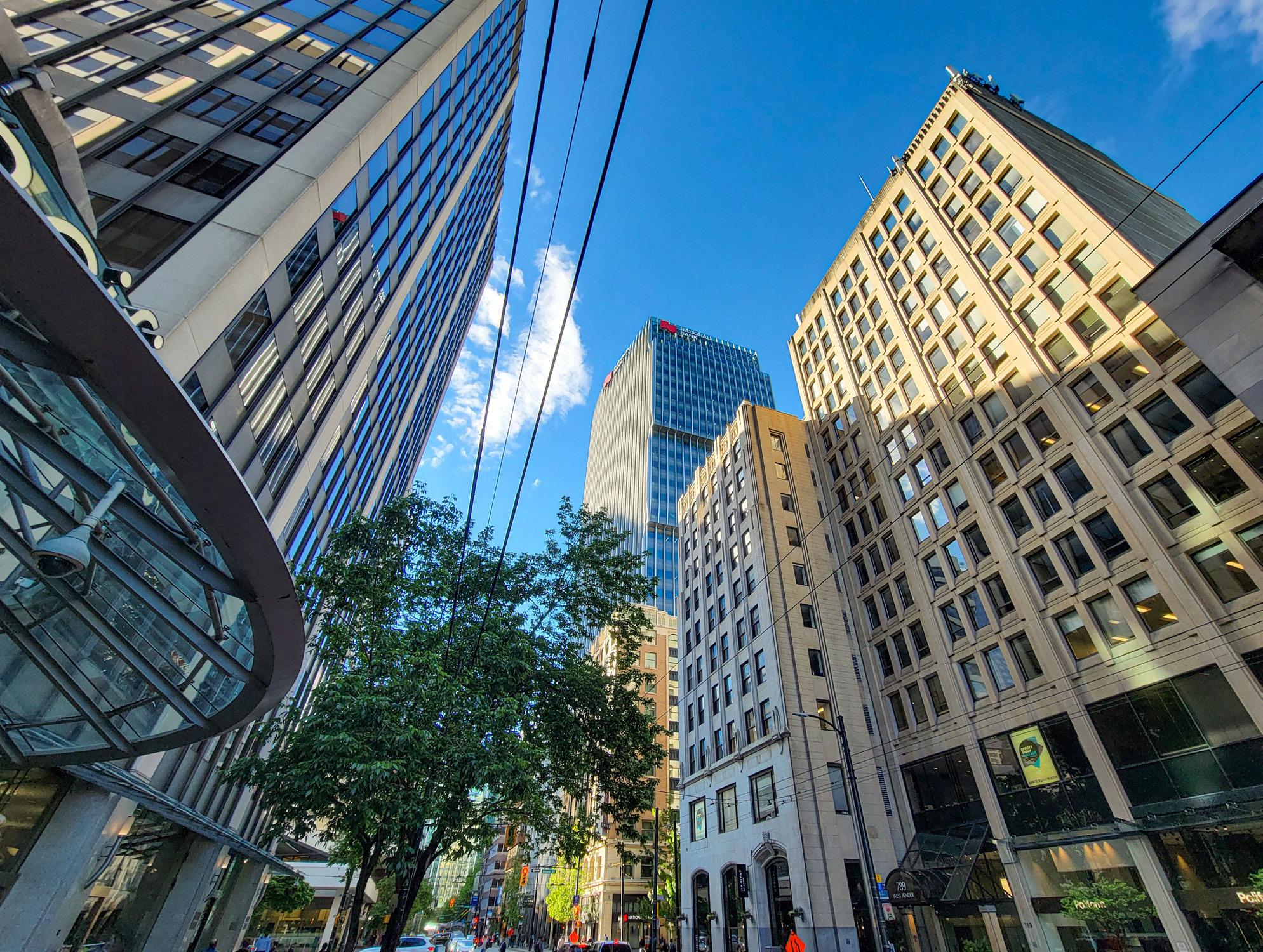
Since declaring the crisis eight years ago, BC has lost over 14,000 people to overdose, with Indigenous people making up nearly “six times the rate of other BC residents.” According to CBC, “toxic drugs are the leading cause of death for people aged 10–59” in the province. Complete prohibition of these drugs, while it may seem like an attractive idea to elected officials, does not work. Two years ago, BC was granted a historical exemption to the Controlled Drugs and Substances Act to decriminalize “small-scale possession of illicit drugs” for a three-year pilot project. This May, BC recriminalized these substances, which is a major step backwards.
Drug decriminalization is an important harm reduction policy. It can help prevent overdose by understanding that people who use drugs can face difficulty receiving medical or social care if the threat of criminal prosecution continues to loom over them. Decriminalization paves the way for constructive and rehabilitative solutions for those who use drugs, while having a criminal record poses significant barriers to social reintegration. Harm reduction ideologies recognize that addiction is not a moral failing but a result of larger social and economic structures. In practice, harm reduction shifts the focus from punishment and abstinence to compassion, support, and safe pharmaceutical alternatives. Most importantly, harm reduction practices treat people who use drugs as people, first and foremost. This is extremely relevant given the stigma around people who use drugs and the social connotations of being criminalized.
Two years after decriminalization, BC recriminalized the use of drugs in public spaces. A CBC article notes that while possession of 2.5 grams or less and use in private residences is still decriminalized, use in public spaces is what the amendment seeks to prevent. Although the government may argue this is the most practical solution, I wholly disagree. I do not trust the VPD or RCMP, organizations with a gruesome history of violence toward marginalized members of the community, to make unbiased and just decisions regarding who is a danger to public safety. This amendment also seems entirely targeted. We know that the opioid crisis disproportionately affects people who are unhoused or experiencing unstable housing; making their legal safety contingent on using drugs in a private residence is just diabolical.
The Select Standing Committee on Health’s report from the Legislative Assembly of BC recommends that drug trafficking enforcement should be part of a broader response. Rather than prioritizing law enforcement, they request that “overdose and mental health calls be redirected to more specialized responders where possible,” and recognize a larger continuum of care is necessary to provide significant solutions. Strictly medical views of substance use are deceptive in that they avoid discussions about the things that harm drug users the most, such as drug laws and excessive use of police force to impose them. In reality, the actual harm experienced by people who use drugs is a by-product of social, economic, and racial inequality, on top of the physiological and mental effects of addiction. Drug criminalization disproportionately impacts Indigenous people due to factors like racial profiling and overpolicing, compounded with systemic healthcare and social barriers. They’re also overrepresented in overdose statistics, making up 10% of mortalities. This is why harm reduction policies alone cannot alleviate what is ultimately a consequence of colonialism — but that doesn’t make them meritless.
Harm reduction practices treat people who use drugs as people, first and foremost.
Giving the police even more authority to assess who is a danger to their surroundings will do further irreparable damage to the lives of people who use drugs. Where instead they could be met with empathy and understanding, they are met with punitive force and aggression. This is a critical mistake from the provincial government, especially when the opioid crisis is ravaging our most vulnerable communities. This amendment will only put more people in danger. With BC’s next provincial election only four months away, I urge students who are eligible to register to vote and become involved in community and regional politics — it will not fix the problem, but it may bring us closer to creating meaningful solutions.
The North Vancouver-based band discussed their new EP and tour BE
HAILEY MILLER STAFF WRITERKnown around Vancouver as the Peach Pit twin of the alternative-rock scene, Grade School creates their own sound while still appreciating the bands they’re influenced by. Their latest EP, Be Cool, Grade School!, was released on May 18 and houses a surf-rock, new wave vibe that’s bound to have you bopping to the beat as you wander down to Kits beach. Based in North Vancouver, the band consists of Cody Schroeter (vocals and guitar), Ryan Ng (guitar), Julian Morency (keys), Jack Bunting (bass), and Gaspar Babeanu (drums).
“Me and Ryan met through a friend’s band that we played in,” explained Schroeter, which occurred after a run-in at a Peach Pit concert. Their name alludes to how the rest of the band “met in preschool.” Ng had been “a fan of the band from the start” and played drums prior to joining them. “Everything kind of fell in place because I was a drummer but I wanted to play guitar,” he said.
As the title of the EP states, the meaning behind the songs relates to experiences the band had growing up, from childhood through to adolescence. The EP’s first track, “Castle Fun Park,” drew influence from Schroeter’s experience as a kid who was too short to go on rides at the PNE. The prominent trumpet featured in this track sets the tone for the EP right off the bat. “It’s the first time we collaborated with another artist,” added Schroeter, as the trumpet was played by Len Plisic of local band Punching Knives.
This 2017 documentary musical examines “First Nations activism” alongside powerful beats
IZZY CHEUNG · ARTS & CULTURE EDITOR
Content warning: mentions of assimilation, residential schools, and cultural genocide.
Colours bleed into the pages of a black and white newspaper as a low-tone humming surrounds the screen. The steady, heartbeat-like fervor of a drum echoes through the scene. A powerful voice sings a chant-like melody. Sitting at a large wooden desk is a man, his burly shoulders wrapped up in a crisp suit, elation hitting his features as he passes a piece of paper. The form is signed, and in the distance, you can hear an airplane pass over the sky. Suddenly, the beat switches.
The powerful strums of an electric guitar pierce the steady drum beats. A tambourine chatters on in the background. The song has shifted, becoming immersed in a pop-rock beat that has you tapping your foot to the rhythm. With the snap of a finger, this serious, heavy scene has transformed into a lively performance worthy of an award-winning stage. This sudden tone-shifting and musical action is a trademark piece of the puzzle that is Marie Clements’ The Road Forward.
A unique blend of documentary and musical, The Road Forward is an electric guitar-charged, slow-drum settled collection of old and new history behind Indigenous peoples’ fight for rights. It mixes modern-day recounts of various struggles with clippings from old newspapers detailing the same issues at their respective times. Sprinkled between these are performances of original songs with non-specific historical figures dressed up as if they had been transported back in time.
Clements, a Métis and Dene director and filmmaker, came up with the idea for this innovative musical documentary
“I kind of just get a bit too loose with my metaphors,” Schroeter said. Ng added that it’s in their “subconscious” to write lighthearted songs about their childhoods. Their discography hopes to project the atmosphere of a “coming-of-age movie.”
Much of the musical influence for “Castle Fun Park” came from listening to songs by indie rock band Beach Fossils. “Be Mine” — the EP’s closing track — took inspiration from local indie pop sensations Peach Pit. Ng added that the EP featured “the leftovers” of their previous album while drawing on inspiration from ‘80s new wave band, New Order.
“There’s live drums on every track,” said Schroeter, saying the band recorded all sounds in the EP live. This was a new endeavour for the band as they had previously only used synthetic drum tracks with live elements when possible. They hope that, because of this, the album has more of a “band feel.”
“The writing process was much more organic, too, where we all gathered in a room, and we kind of built on together, as opposed to being much more separate,” Ng said. “We also experimented with more synthesizers.
“We still try to keep that made-at-home kind of lo-fi vibe with it,” said Schroeter. “None of these songs were recorded in a studio.” He laughed, lifting up his laptop to pan his bedroom, denoting what could easily be classified as bedroom rock. The genre
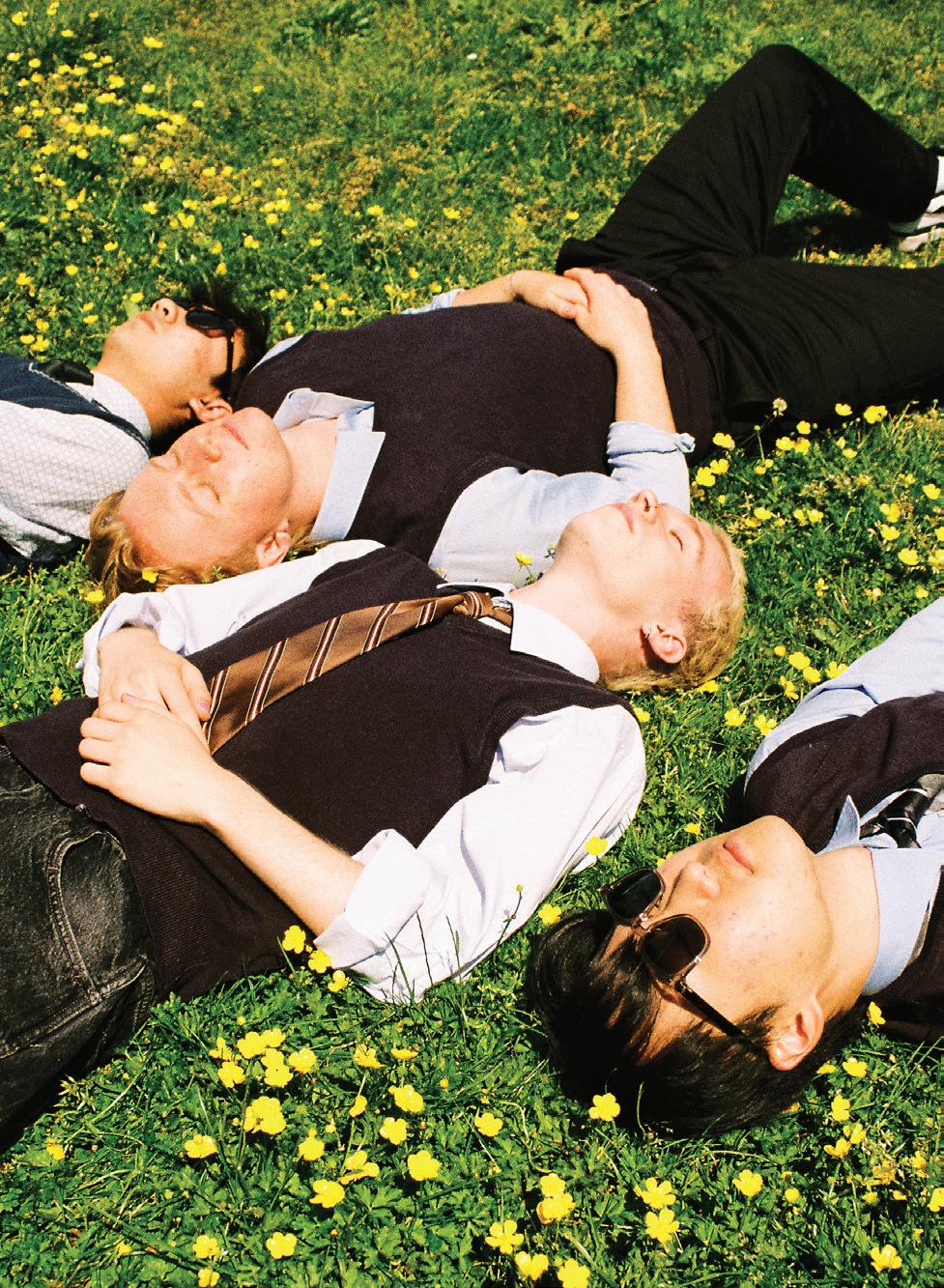
has come a long way from the garage band era of the ‘90s, with Grade School moving the ordeal upstairs and keeping the rough-edged, indie sound alive.
The band is going on a Canadian tour with Black Pontiac, and their excitement is emanated upon the announcement. They look forward to writing “more music as fast as possible,” and having “new inspirations” from the road to tie into new bodies of work.
FollowGradeSchoolontheirsocialmediaastheydocument theirBCandABtour(June26–July13,withmultiplestopsinBC).

from “writing different lyrics based off of different headlines and stories that hit me,” she said in an interview with CBC. These headlines came from The Native Voice, Canada’s first Indigenous-centred newspaper. This became a defining factor in not only the creation of this documentary-musical-hybrid, but also how it was stylistically formatted.
At the end of the film, everyone comes together to sing a final song, mixing harmonious voices with roaring chants and thudding drums decorated with the traditional formline art of the Northwest Coast. It’s the perfect ending to such an eye-opening documentary.
When going through a newspaper, Clements told Vancouver is Awesome, “You’re getting a sense of urgency or a sense of movement or a sense of excitement or anger or curiosity about each story or headline.” That’s something she wanted to mimic for this film’s audience.
Newspapers and upbeat tunes aren’t the only prolific parts about this documentary. There are times when the upbeat tune starts to grow soft — the type of “soft” you associate with a horror movie when things seem too positive to be safe.
This occurs in the seemingly cheery song, “Good God, I was a Sinner,” a folk song that discusses Indigenous children being forced into residential schools. As the campfire beat continues, the joyful setting begins to change, slashed through with distorted black and white videos of Indigenous children being forced to assimilate into so-called Canadian culture. The sky grows gray, the wind picks up, and the singers’ voices begin to waver. It’s a spine-chilling scene that serves as a stark reminder of the injustices committed towards not just the Indigenous children of that time, but also those who must face the consequences of these decisions to this day.
The dark, cruel world of black and white shifts when the seashell-stained waters of the West Coast wash up on the shore. A woman’s soft lilt echoes amidst the swirling sound of the shore. Singer Jennifer Kreisberg kneels to touch the water, followed by other members of the cast. As the voice continues to hum, they stand, all walking together as they make their way from nature into the city. Seeing everyone come together, as if all part of one cohesive group, was the most touching moment in the documentary to me. At the end of the film, everyone comes together to sing a final song, mixing harmonious voices with roaring chants and thudding drums decorated with the traditional formline art of the Northwest Coast. It’s the perfect ending to such an eye-opening documentary.
The Road Forward is, at its core, a tricky one to traverse — one that Clements executes masterfully with her musical flair. This documentary may have come out in 2017, but regardless of how far into the future we travel, it’s clear that there must always be a “road forward” for those who have been wronged by the injustices of this of colonization.
Watch The Road Forward at nfb.ca
WRITTEN BY
KAJA ANTICMuch of what is now called British Columbia exists on the unceded Coast Salish Territories of the Skwxwú7mesh (Squamish), xʷməθkʷəy̓əm (Musqueam), and səlilwətaɬ (Tsleil-Waututh) Nations. As we observe and celebrate Indigenous History Month in the Lower Mainland, it is important to recognize and use the traditional names of the land we live on, whether they are currently used, or more commonly known by colonial names.

Sch’ich’iyúy (Twin Sisters or Two Sisters)
Located on the North Shore mountains at the entrance of səlilw̓ət (the Burrard Inlet), these two peaks were first known in the colonial realm as “The Lions” — which led to the naming of Lions Gate Bridge, and the BC Lions football team. In Sḵwx̱wú7mesh (Squamish) legend told by a late Chief Su-á-pu-luck (Joe Capilano), the peaks were made by the Creator to commemorate peace between the Haida and Sḵwx̱wú7mesh people, after Haida twin brothers married two Sḵwx̱wú7mesh sisters, who were the daughters of the Sḵwx̱wú7mesh chief.

Say-mah-mit (Port Moody)
Say-mah-mit was a large səlilwətaɬ (Tsleil-Waututh) village located at Noon’s Creek in the southeastern corner of the səlilw̓ət (Burrard Inlet). The village was an important settlement until Indigenous people were driven out by European colonial settlers. Middens (artifacts associated with past human occupation) contained many remains of eulachon — a smelt fish that navigates both freshwater and saltwater along the west coast — indicating that they were either processed or consumed on this site en masse.
It is important to recognize and use the traditional names of the land we live on, whether they are currently used, or more commonly known by colonial names
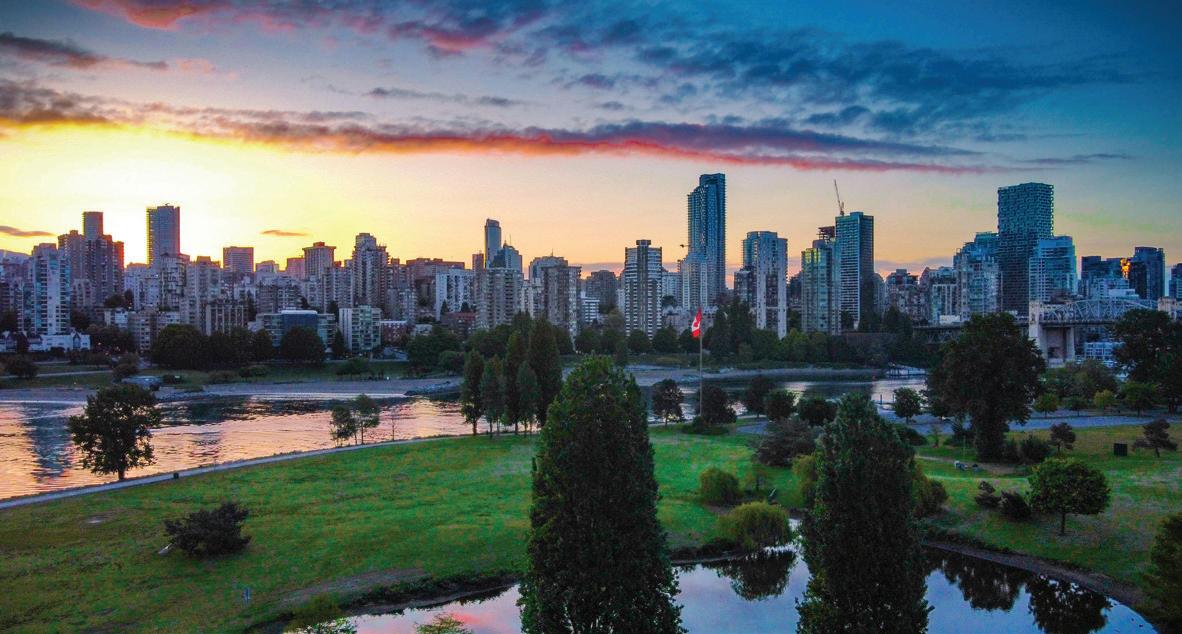
sənaʔqʷ
Located at the entrance to False Creek, sən̓aʔqʷ was the site for a xʷməθkʷəy̓əm (Musqueam) camp prior to the invasion and settlement of European colonizers. The xʷməθkʷəy̓əm people used the area for settlement while hunting or gathering in the surrounding forest, or when fishing in səlilw̓ət (Burrard Inlet), which was very important for the food production of the nation. The settlement was also used when harvesting and processing fish for storage, and was connected to other xʷməθkʷəy̓əm villages along the staləw̓ (Fraser River) via trails that ran across ʔəlqsən (Point Grey).

sɬχiləx (Siwash Rock)
One of the Indigenous landmarks in Stanley Park, sitting between what’s now known as Third Beach and the Lions Gate Bridge, sɬχiləx is of cultural importance to xʷməθkʷəy̓əm (Musqueam) people. In xʷməθkʷəy̓əm legend, this site was a transformation site where χe:ls (the transformer) “transformed a man to stone for his conduct,” and it stays standing on the coast as a reminder of xʷməθkʷəy̓əm teachings. It is also related to another legend, where “χe:ls killed a giant octopus (devilfish) at xʷməθkʷəy̓əm he flung the smallest tentacle and it landed at sɬχiləx.” The amount of small octopi living near this coastal landmark is credited to this legend.

χʷayχʷəy (hənqəminəm) / Xwáyxway (Sḵwxwú7mesh) (Lumberman’s Arch, East Stanley Park)
χʷay̓χʷəy̓ was a large village located on the eastern side of Stanley Park, where the Lumberman’s Arch monument, a tribute to BC’s lumber industry, now stands. The site was home to Skwxwú7mesh (Squamish), xʷməθkʷəy̓əm (Musqueam), səlilwətaɬ (Tsleil-Waututh) peoples, with many residents living in multiple longhouses on the peninsula. It was also where xʷməθkʷəy̓əm ancestors “received the sχʷay̓χʷəy̓ mask and teachings; a culturally sensitive hereditary cleansing right.” After British settlers declared Stanley Park lands a military base, the Indigenous inhabitants of χʷay̓χʷəy̓ were systematically pushed off their traditional lands, a process that accelerated when the Stanley Park site was officially declared in 1888. A medical health officer was recorded in the city council meetings, recommending that the buildings be destroyed at X̱wáy̓x̱way because of a smallpox outbreak. The rest of the village was forcibly removed by settler road crews building the original perimeter road, which also disrupted burial sites for their ancestors and belongings.
In 1919, the Art, Historical, and Scientific Association, the precursor to the Museum of Vancouver, proposed to build an “Indian village” near the site where χʷay̓χʷəy̓ had stood. In the early 1920s, the organizations now known as the Museum of Vancouver and the Vancouver Board of Parks and Recreation began importing artefacts like totem poles and canoes from Indigenous peoples on the northwest coast. The idea was to create a village based on traditional Haida construction and art, despite the majority of the nation living hundreds of kilometres away from the park, and the removal of xʷməθkʷəy̓əm and Skwxwú7mesh settlements that had been going on for decades. There have


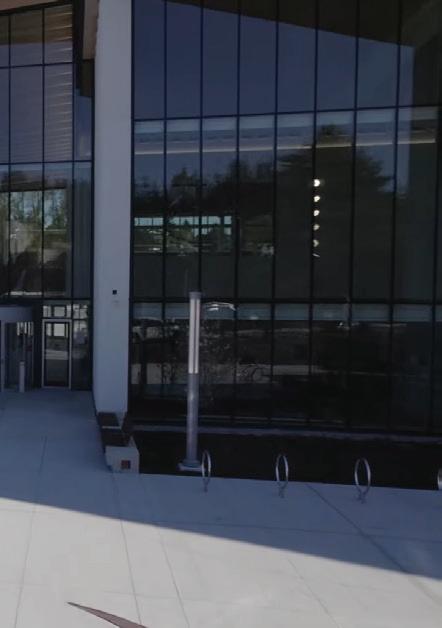
COURTESY OF NEW WESTMINISTER PARKS AND RECREATION
təməsewtxʷ Aquatic and Community Centre
Recently opened on June 1, the təməsew̓txʷ Aquatic and Community Centre in New Westminster uses xʷməθkʷəy̓əm hən̓q̓əmin̓əm̓ (Musqueam Halkomelem) in its name. təməsew̓txʷ means “sea otter house.” Indigenous knowledge keepers spoke to the naming panel about how sea otters historically ventured far up the Fraser River to New Westminster, a city known for being “where the freshwater of the river meets the saltwater of the sea.” This new aquatic and community space was built to replace two aging buildings: the Canada Games Pool, which was closed in 2021 — earlier than expected due to flooding — and the Centennial Community Centre, which was closed last November.

spapəyəq (Brockton Point, East Stanley Park)
Located on the eastern side of Stanley Park, spapəy̓əq was the site where the last xʷməθkʷəy̓əm (Musqueam) residents inside the park lived before they too were expelled. Currently, the area is known for the Brockton Point Lighthouse, the Nine O’Clock Gun, and the First Nations Totem Poles, some of which originate from χʷay̓χʷəy̓ (Lumberman’s Arch, East Stanley Park) and Chay-thoos (Prospect Point). Along with χʷay̓χʷəy̓, this site was essential for gathering clams, mussels, and crabs. These resources were lost as the Indigenous people were systematically removed from the park’s boundaries. More recently, in May 2023, the xʷməθkʷəy̓əm, Sḵwx̱wú7mesh (Squamish), and səlilwətaɬ (Tsleil-Waututh) Nations, alongside the Vancouver Board of Parks and Recreation permanently raised flags representing the three nations in this area — first time this has happened in a Vancouver park!
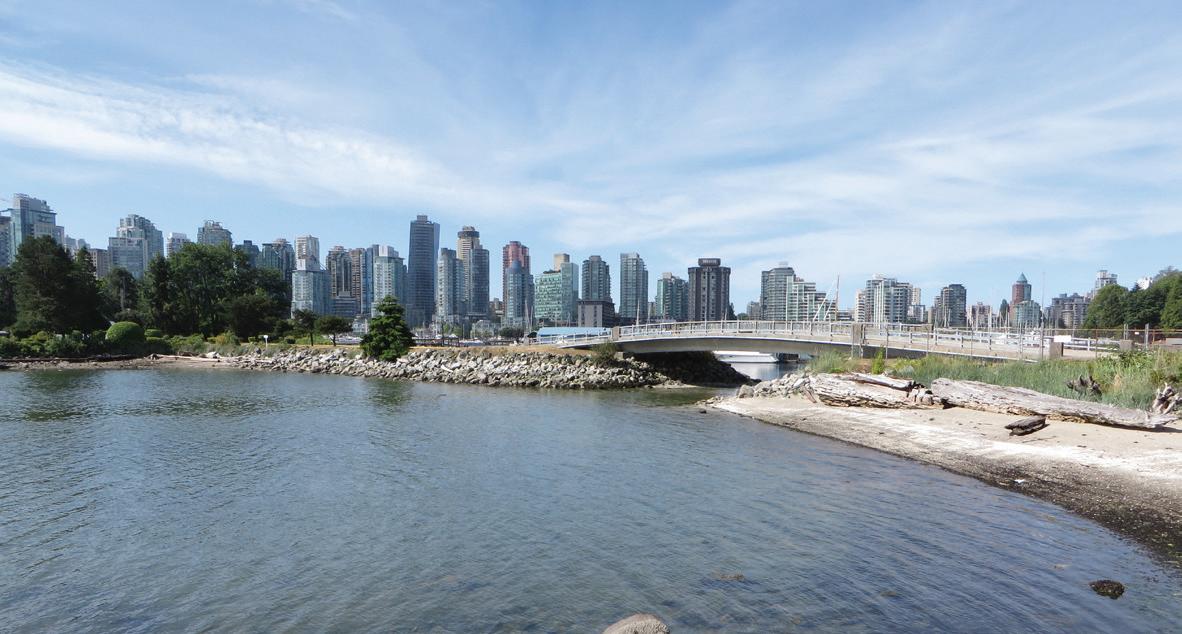
skwtsa7s (Deadman’s Island)
Named after the ship that George Vancouver used to “discover” Turtle Island’s northwest coast, the Canadian navy mainly used the island’s buildings in demobilisation efforts after World War I. It has been recognized in local First Nations legend that the colloquial name came to be from the mass casualties from conflicts on the island, both between nations and settlers, and between nations themselves. It has also been recognized as a burial site, where Indigenous peoples placed the deceased in cedar boxes and hung them among the branches of the island’s trees.

COURTESY OF @SARAHKIRBY_YUNG / X
šxʷməθkʷəyəmasəm (Musqueamview Street)
This street in Vancouver’s Kitsilano neighbourhood was renamed in 2021 to recognize the lands of the xʷməθkʷəy̓əm (Musqueam) people it runs across. The street was originally named Trutch Street, after the late 19th century Lieutenant Governor of BC Joseph Trutch, who is now known for his racist and discriminatory actions against Indigenous peoples. Petitions were raised in the late 2010s, with the City of Vancouver voting unanimously in 2021 to rename the street later that year. On National Day for Truth and Reconciliation in 2021, xʷməθkʷəy̓əm gifted the city a new name for the street — šxʷməθkʷəy̓əmasəm in the xʷməθkʷəy̓əm hən̓q̓əmin̓əm̓ (Musqueam Halkomelem) language, and Musqueamview Street in English.
PHOTO: BERNT ROSTAD / FLICKR COURTESY OF WIKIMEDIA COMMONS PHOTO: WILLIAMNYK / FLICKRContent warning: mentions of colonialism.
PETRA CHASE · EDITOR-IN-CHIEF Elisapie
Elisapie
Prolific Inuk singer-songwriter Elisapie’s latest album, Inuktitut, covers ten pop and rock classics translated into ᐃᓄᒃᑎᑐᑦ (Inuktitut). She grew up around this language in ᓴᓪᓗᐃᑦ (Salluit), a snowy Inuit village in Nunavik, Quebec. Elisapie’s gentle voice is like sunbeams over familiar melodies, making her tracks feel serene. Each song is tied to an intimate memory of a loved one. “Uummati Attanarsimat (Heart of Glass)” compiles grainy footage of Inuit children playing in the snow. In addition to this Blondie rendition, Inuktitut includes acoustic covers of other iconic ‘70s and ‘80s songs such as Fleetwood Mac’s “Sinnatuumait” (“Dreams”) and Cyndi Lauper’s “Taimangalimaaq” (“Time after Time”).
In the album description, Elisapie said these songs acted as “an escape.” When they were at the height of their popularity, these songs “once took over the community radio airwaves,” and also made Inuit communities feel like “we were being heard.
“They were our songs too,” she told CBC, also speaking about the painful and bittersweet memories associated with them. Finding their meaning in Inuktitut gave her a deeper understanding as to why the songs have such emotional reactions for her community.
“It’s so beautiful to say that Metallica was there for us,” she said.
“When we weren’t able to express a lot of things, they expressed it for us.” The songs were all translated intimately by Elisapie, a process which she calls “cultural reappropriation” as she “tells her story, offers these songs as a gift to her community, and makes her language and culture resonate beyond the Inuit territory.”
See Elisapie perform live on September 28 at the Chan Centre for Performing Arts.
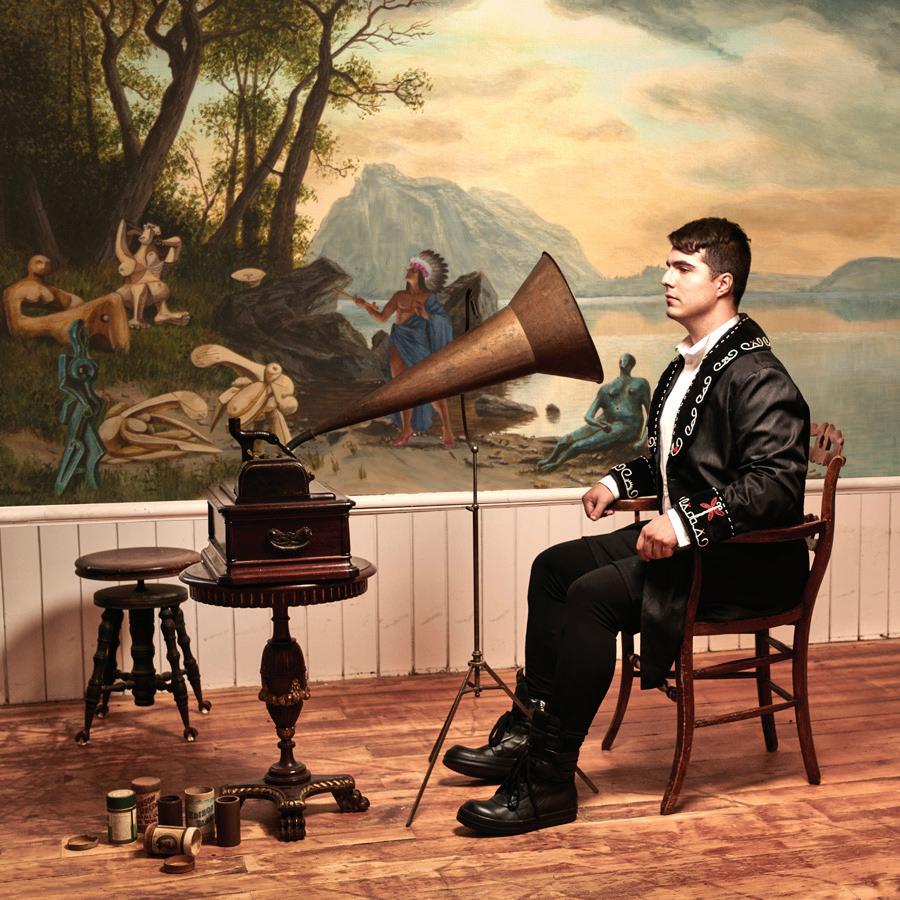 Jeremy Dutcher
Jeremy Dutcher
I came across Wolastoqiyik (Maliseet) “two-spirit song carrier”
Jeremy Dutcher with his goosebump-inducing Tiny Desk concert.
In the opening song “Mehcinut” (“death chant”) from his debut 2018 album, Wolastoqiyik Lintuwakonawa (“Our Maliseets Songs”), Dutcher’s angelic, classically-trained voice is explosive yet controlled, touching high notes and deep emotion as he pours himself into the piano. Halfway through, a wax cylinder recording of an ancestor cuts through, with their long-held notes creating a moving duet across centuries. “Mehcinut” is a traditional song to celebrate life.
Dutcher is an ethnomusicologist who is dedicated to making music in his ancestral language and traditions of Wolastoqiyik (“wool-las-two-wi-ig”), meaning “people of the beautiful river.” The Wolastoqiyik are also referred to as Maliseet. This language has existed for many generations near the Saint John River and now has less than 100 “fluent, life-long language speakers” left. Working with Elders in his community of Tobique First Nation in New Brunswick and using archival recordings, Dutcher challenges “death narratives or the idea of Indigenous people as fading people.” He’s brought beautiful songs in his language to international ears, winning the prestigious Polaris Music Prize for his first album and bringing his Elders in the audience pride. In an interview with CBC, he stressed the importance of “frontloading [Indigenous] languages and making sure that they are centred.”
Dutcher recently released his second album, Motewolouwok, of which my favourite track is “ᐯᒪᐧᓱᐧᐃᓄᐧᐁᒃᐧᐊᓇᑭᔭᐧᐁᓓᑐᐧᐁᒃ” or “pomawsuwinuwok wonakiyawolotuwok.” It’s a “resistance song” where the meandering instrumentation and vocals build up in volume like I’ve never heard before. The lyrics include an English translation of the song’s title: “People are rising all over the world so we stand up.” He shared that he “wanted to write a song that flowed between Wolastoqiyik language and English, in hopes of calling as many to the table as possible to witness the rising.
“Stories and music are what move our culture forward,” he expressed in his Tiny Desk performance before getting the audience to hum a backing acapella note for his final song. Meaningful connections like these are commonplace in Dutcher’s live performances.
Catch his performance at Vancouver Folk Festival at Jericho Beach on July 19.
Dear Peakie,
I have given birth to so many children you’d think I was Little John’s wife! No galvanized steel is needed for me, though; I prefer to work on poles. Anyhow, my children continue to spread lies about me! Accusing me of forgetting their names, editing them unfairly on my ever-expanding television franchise where I make them strut for the viewers’ entertainment (mommy-vloggers wish they were me), and even fracking! How do I get my kids to start respecting me?
Sincerely, I Made Them RuGirls, And I Can Unmake Them RuGirls
Dear I Made Them RuGirls, And I Can Unmake Them RuGirls,
You are living the dream life. You are what Kate Plus 8 wishes she was. You, my queen, are the blueprint. Kids are nothing but mere extensions of our bodies, which should be used for our own personal gain. You did not carry all those kids in your womb for nine months just for them to disrespect you like this. SHOW THEM WHO’S BOSS. No! Not by grounding them . . . by buying them what they want! They may not respect you, but I know for a fact they will respect that cash ;)
You better milk them kids, Peakie
Dear Peakie,
Today, I walked down Davie Street with my partner of two weeks, picking out baby names. It was a fantastic chat. We held hands on the rainbow crosswalk as I sipped on an iced matcha and she enjoyed an iced chai. But, as I was fiddling with my 15 rings, it dawned on me that we hadn’t considered the most important thing! What will our children call me? Combining mom and dad into a gender-neutral alternative has proven difficult, mad and dom probably won’t work . . . Any ideas?
Sapphically,
Historians Would Call Us Best Friends
Dear Historians Would Call Us Best Friends,
This is a recurring question many 2SLGBTQIA+ individuals have. You see all those white country folks calling their grandparents meemaw, peepaw, juju, etc. Why not do the same? I suggest that your kid call you Your Highness. It creates an automatic sense of respect for you, and it’ll make you feel like royalty! If you don’t like that, try Mighty Ruler or Always Right. TBH, I think this is the least of your worries. You should focus on how to stop wearing those tacky 15 rings.
Get a stylist, Peakie
Dear Peakie,
We are very sad. Someone created this Pride flag with our missile company’s logo on it. Because we care so much about people, we cannot take credit for the image even though it’s nicer than the banner we use when participating in Pride parades. On top of that, people are criticizing the lovely inclusive flag. How do we explain to the haters that it’s 2024 and the gays can engage in war crimes, too?
Sincerely, Slaying In My Rainbow Fighter Jet
Dear Slaying In My Rainbow Fighter Jet, UGH! Don’t listen to the critics. Of course, military support companies belong at Pride. World War III WILL be 2SLGBTQIA+ inclusive. The queer community is perfect to advertise to. Do people not realize the athleticism it takes for a drag queen to do all those death drops? Or the courage it takes for a lesbian to rock a pixie cut? I’ve had enough. Queers can be murderers too!!! I said it, who cares about intersectionality? Certainly not the queer people these companies are hurting! Start spreading the word because we’re gonna need all the glitter and sparkles we can get if we are funding nuclear weapons.
Let’s slay (literally and figuratively), Peakie
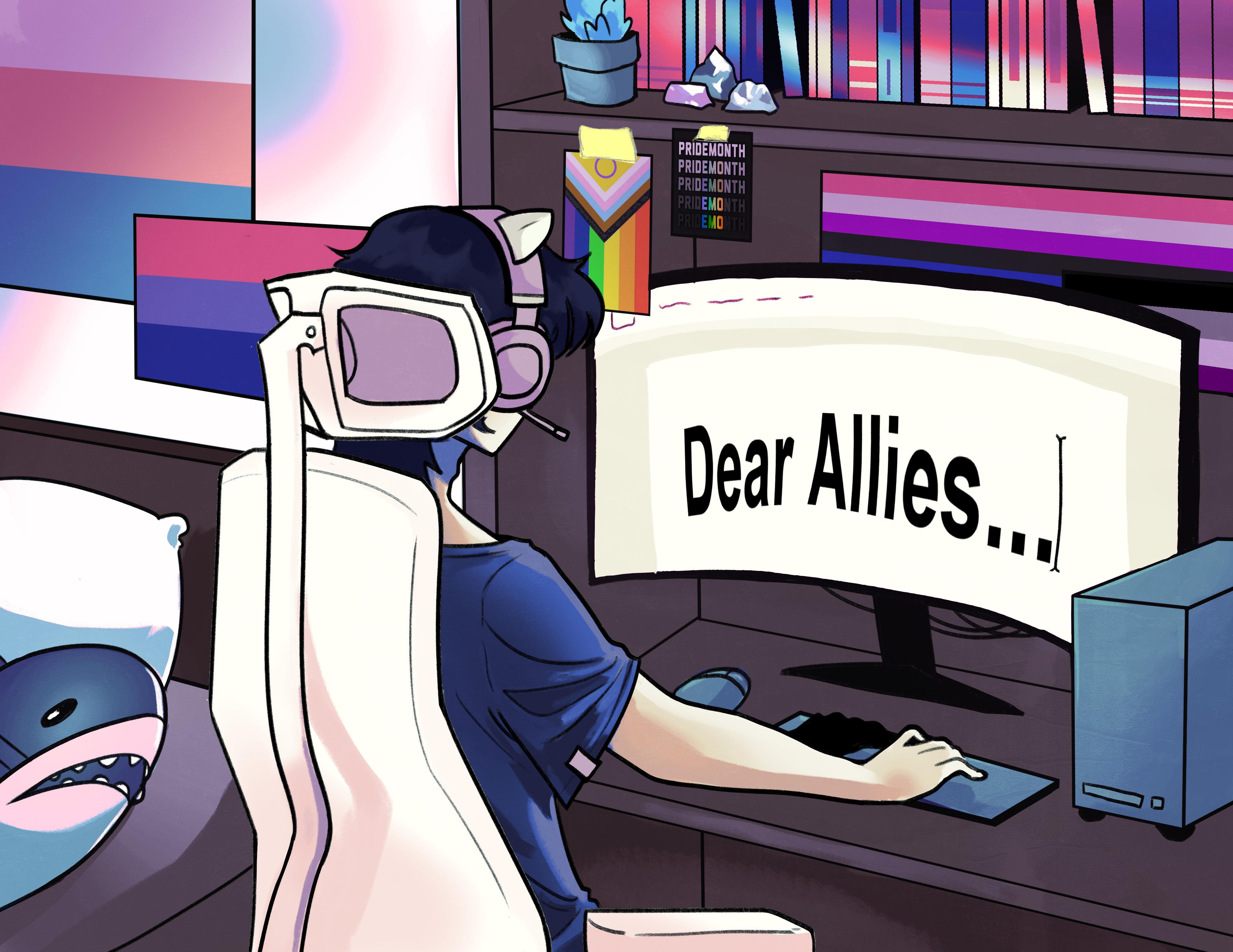
notes, straights
ILLUSTRATION:
Cam Darting • Peak AssociateI think it’s time to move to a different city and start anew. Everyone around me is a fake ally. It’s been 4,320 minutes since May turned into June, and nobody has wished me a happy Pride Month. No Skittles, no rainbow flags, and not even a mere “YASS QUEEN.” In times like this, I ask myself, why did I even come out of the closet? OK, to be fair, I never really had to because my wrists have been bent since birth, but still . . .
Here are some ways you can be like Valentina and be an ally this pride season!
First up, give your rainbow friend money. Did you know 2SLGBTQIA+ people generally earn less than their heterosexual counterparts? How devastating is that? Fuck systemic change, the only way to make things better is if YOU, the cishet friend or family member, do something about it. Slide a minimum of $200 to your “special” friend. If you don’t, you’re contributing to the problem and don’t want to see queer people have rights. Sorry, I don’t make up the rules.
Second, buy them a car. But why a car? Easy, to give your rainbow friend freedom. Do you know how suffocating it is to be locked in a closet for most of your life? Well let me tell you, it is not fun. It’s dark, it’s lonely and, for me, the worst part was not being able to wear cunty ass crop tops. This is all trauma a hetero will never understand which is why you need to buy your fruity friend or family member a car.
Thirdly, pay for their septum piercing. Nothing says 2SLGBTQIA+ more than a piercing that makes you look like a cow. It’s a canon event for us rainbowed people. Enough said. Don’t question the gay while it’s his month.
That’s that, folks. Those are the ONLY three ways you can show your support during Pride Month. If you can’t do any of those three things, you’re anti-2SLGBTQIA+ and you want to see the community fail. How terrible is that? You are the one and only problem.
Anyways . . . happy Pride to everyone and I’ll see you all in hell <3 — JK ;)
June 17–23
The stars say wear this at the Pride parade

Aries
March 21–April 19
Anything but a G-string
As an Aries, you’re fun, energetic, and the life of the party. At Pride, you’ll be jumping up and down, dancing, and because of this, we need to ensure the goods are intact. So, DON’T WEAR A G-STRING (especially if you have a penis). You do not want that thing flopping out and about like a fish outta water. YIKES!

Cancer June 21–July 22
A bedazzled backpack
You, my friend, are nurturing, caring, and loving. I know you’re gonna wanna pack everything from food to a first-aid kit because you wanna be prepared. This is why you need to wear a bedazzled backpack. It’s cute, it’s gay, and it’ll fit all your essentials — even that pink vibrator of yours ;).

Libra September 23–October 22
Red lace underwear
The stars suggest adult Libras strut in lace underwear. As our favourite romantics, we know for sure you’ll use your charming personality to bag yourselves a partner for the night. For added drama, you can wait for the late-night Pride parties to begin before you reveal your little red number.

Capricorn
December 22–January 19
A rainbow flag
Chances are, you’re gonna transit to the parade, and you don’t wanna be covered in body glitter and temporary rainbow tattoos. This is why the heavens have given you a rainbow flag to wave. It’s easy to hold and can be quickly tucked away so you don’t get hate crimed! You can blend in with the queers and blend in with the homophobes. You’ll be like Hannah Montana, living a double life.

Taurus
April 20–May 20
You can rock anything
As a Taurus, you are graceful and diligent. The heavens trust that you will exude elegance no matter what you wear. OK, actually, the heavens retract that. Wear anything but a fursuit. This summer is going to be so hot, you don’t want to overheat. No meowing and woofing for you this Pride season.

Leo July 23–August 22
Nothing
This suggestion is not for kids or people who are afraid of public indecency charges. But, for the rest of you Leos, what better way to grab people’s attention than wearing nothing? When I say nothing, I mean NOTHING. Those little pubes of yours have got to go. If it’s not looking like Mr. Clean’s head, you’re doing it wrong.

Scorpio
October 23–November 21
Sunglasses
Shade, shade, shadeeeeeeee. As the shadiest sign known to man, you better wear some sunglasses for all the reading you’re about to do this Pride. From the outfits to the people showing up, you’re gonna have an opinion, and it might not be the nicest.

January 20–February 18
BODY GLITTER
Sorry, I just got dazzled by how much glitter will be all over your body, Aquarius. It’s perfect for you because you’re prob one of the only signs who can rock this. BTW, when I say body glitter, I mean ONLY body glitter. Aquariuses need to let their nips breathe. NGL, you might get arrested for public indecency, but at least you’ll have Leo to keep you company!

Gemini May 21–June 20
Rainbow face paint
This is the perfect chance for you to hide your two-faced personality. You already wear a mask when you talk to people; what’s one more? Make sure to pick the most durable, sweat and water-resistant paint (you’ll need it).

Virgo August 23–September 22
A T-shirt that says “love wins”
My favourite prude. As the most conservative of the signs, you get a T-shirt. Boring? Yes. But it’s OK because so is your personality <3

Sagittarius
November 22–December 21
A fan
You betta work, Ms. Sag. As a fun and energetic friend, you will be the life of the parade. You need something as big as your personality to accompany you, hence the fan. CLACK, CLACK, CLACK. That is all the crowd is gonna hear from you, opening that gigantic fan all day.

Pisces
February 19–March 20
All rainbow fit
We all have that one friend who’s overly supportive. That’s you, Pisces. Because of this, you’ll want to show how much you love your 2SLGBTQIA+ friends, which is why you’re given all rainbow to wear. Is it a lot? Yes. Is it tacky? Yes. Is it sooooo Pisces? YES.




